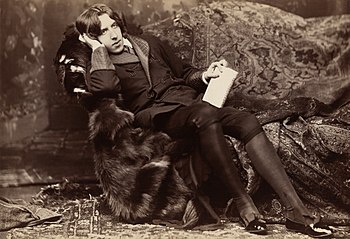Guest Post by
Jonathan Shipley, our man in Oakland...????
They came in droves. Booksellers and book buyers from the four corners of the world flew in from London and Los Angeles, Australia and Alabama. Fielding row upon row of booths at the
48th California Antiquarian Book Fair, attendees sought out their particular interests, fueled by an overarching love of the written word. ??

Taking place this year in Oakland, it was only natural that I spied Jack London at every turn during my Saturday sojourn. He drank beers not far from the convention center where the fair was held (its newest venue), so volumes of
The Call of the Wild and
White Fang were prevalent. Further afield, Californiana was all around--books about the Gold Rush, rare Steinbeck first editions, John Muir tomes, and Beat poetry. But there was so much more.

F. Scott Fitzgerald's walking cane (pictured at left) was for sale for $50,000 at the
Ursus Books booth. Audubon was available for $600,000, and Shakespeare's Fourth Folio was handy too. There were books about ping pong, hot air balloon travel, animal husbandry, Oz books, book on astronomy, jaw fractures, negro spirituals, trains, physics, cooking, cats, cars, even elephantiasis. All the fiction heavyweights were in the ring, including Hemingway, Salinger, Poe, and Dickens. One dealer had all 75 volumes of
Strand Magazine, the magazine that serialized Arthur Conan Doyle's Sherlock Holmes stories. From the cash in your wallet to several hundred thousand dollars, there was something in every price range. ????
The book fair started again early on Sunday morning, 8 a.m., to be exact. That's when, upstairs from the convention hall, several gathered--coffee in hand--for a live
PBA Galleries auction of rare books and manuscripts with early medical works from the George Bray collection. I got my paddle but didn't lift it once. For one thing, I didn't have the financial resources of most everyone there. It was exciting, however, when someone bought Shakespeare's
Second Folio for $114,000. I thought I might get a shot at a signed
Calvin and Hobbes book. No such luck. It hammered for $1,140. My favorite item was
Experiments and observations on the gastric juice, and the physiology of digestion (1833) by William Beaumont. It sold for $780. Gastric juices--there's no telling what one might find interesting at one of the biggest rare book fairs in the country.????
For those just getting into book collecting there were several events at the fair. Vic Zoschak of
Tavistock Books held two seminars on Sunday. The first, "Book Collecting 101," discussed what to collect, collecting strategies, what a first edition is, and a run down of bookish terms and jargon. He followed this with another seminar, "What's This Book Worth?" Zoschak discussed the primary factors that give books commercial and monetary value. Afterwords, in another room, it was "Discovery Day." Fairgoers were offered the opportunity to bring three books and get them appraised by book professionals. The last lecture of the day was, to me, the most interesting. "
Jack London, Photographer" was presented by Sara S. Hodson, who has literally written the book on London as a picture taker. Known for his adventure stories, very little attention has been paid to his work as a photographer. With 4,000 of his negatives at the California Department of Parks and Recreation and 12,000 photographs at the Huntington Library, Hodson discussed London's ability to snap photojournalistic images of the low and destitute, giving them some amount of pride and stature. He copiously photographed the homeless of Great Britain in 1902 and Korean refugees during the 1904 Russo-Japanese War, and took some of the first photographs of the 1906 San Francisco Earthquake.
After all the events, the hubbub on the convention floor was that it was a solid show. And I found something for myself before heading back home to Seattle. I didn't break the bank with my purchase (I have no bank to break) but I'm pleased with my little Walt Whitman book, regardless.
-
Jonathan Shipley is a freelance writer living in Seattle who writes about culture, travel, food, and his kid. Follow him
@shipleywriter.
Images credit: Jonathan Shipley.










![Chimani[1].jpg](https://www.finebooksmagazine.com/fine_books_blog/assets_c/2015/02/Chimani%5B1%5D-thumb-500x364-8167.jpg)







